If you’re looking for a truly unforgettable travel experience, visiting elephants in Thailand should be at the top of your list. These gentle giants are not only one of the most iconic symbols of Thailand but also an important part of the country’s cultural heritage.
Whether you’re an animal lover, a wildlife enthusiast, or simply looking for a unique and meaningful adventure, spending time with these majestic creatures is an opportunity not to be missed. Thailand offers a range of ethical and responsible ways to interact with elephants, allowing you to appreciate these incredible animals in a way that respects their welfare and natural habitat.
Here we want to share the history of elephants in Thailand, why you shouldn’t take part in elephant trekking and how to look for a truly ethical sanctuary, as well as, our experience visiting a sanctuary in Koh Samui.
THE HISTORY OF ELEPHANTS IN THAILAND
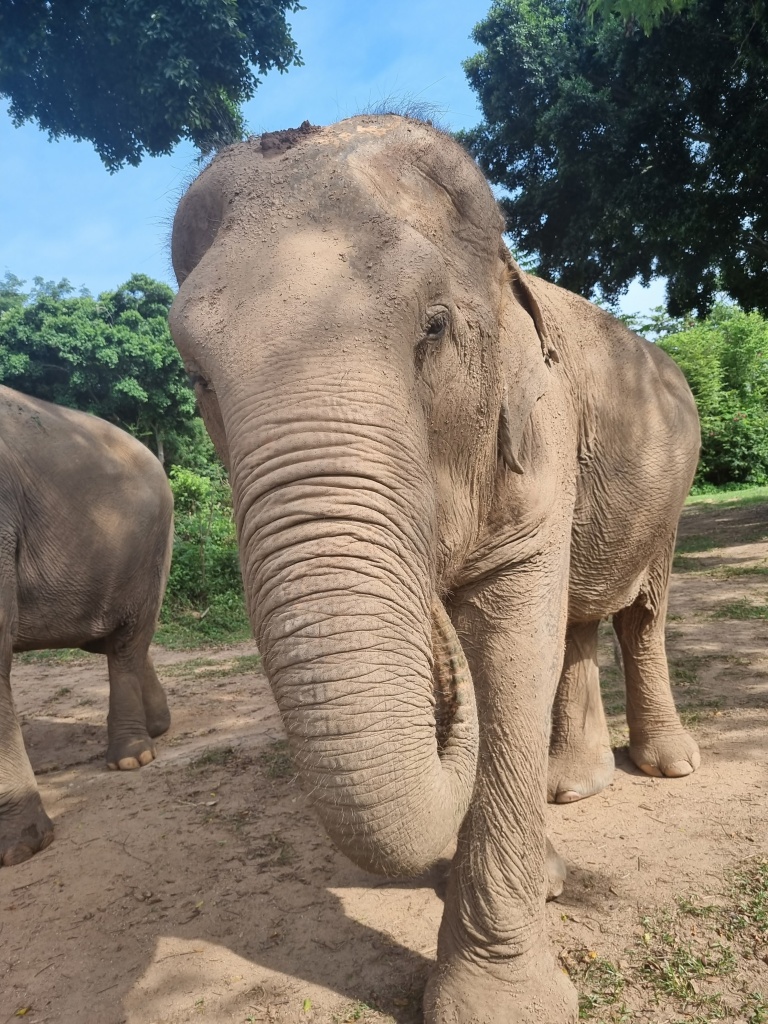
Elephants have played an important role in the history and culture of Thailand for centuries. In fact, the elephant is the national animal of Thailand and has been featured on the country’s flag since 1917.
Here are some interesting facts about the history of elephants in Thailand:
- Elephants have been domesticated in Thailand for over 4,000 years and were initially used as work animals to help with logging and transportation. They were also used in battles and as a symbol of power and prestige.
- In the past, Thai kings owned many elephants and used them for transportation, ceremonies, and battles. Royal elephants were highly valued and were often adorned with gold and jewels.
- Over the last 100 years, the elephant population in Thailand has declined significantly due to deforestation, loss of habitat, and poaching. The Thai government has since implemented measures to protect elephants and their habitats.
WHAT’S WRONG WITH ELEPHANT TREKKING?
Elephant trekking, also known as elephant riding, has been a popular tourist activity in Thailand for many years. However, the truth is that elephant trekking is an outdated and cruel practice that causes immense harm to these majestic animals.
Here are three reasons why you shouldn’t take part in elephant trekking in Thailand:
- Elephants used for trekking are taken from the wild and subjected to a brutal training process called “phajaan,” or “the crush”, this involves separating baby elephants from their mothers, confining them to small spaces, and subjecting them to physical and psychological torture until they submit to human control. This process is traumatic and painful for the elephants and can cause lifelong physical and emotional damage.
- Elephant trekking causes significant physical harm to the animals. Elephants are not built to carry heavy loads on their backs, and the weight of the saddle and the tourists can cause damage to their spine and skin, as well as this, the constant walking on hard surfaces can also cause them life-changing foot and joint problems.
- Elephant trekking is damaging to the environment. The trekking industry contributes to deforestation and habitat loss as land is cleared to make way for tourist activities. The waste and pollution generated by the industry also have a negative impact on the ecosystem.
Remember, elephant trekking is a harmful and inhumane practice that causes immense suffering. You can make a positive impact by choosing responsible and ethical activities, such as visiting elephant sanctuaries that prioritise the well-being of the animals over profit. It’s time to put an end to the cruel and outdated practice of elephant trekking.
HOW TO SELECT AN ETHICAL ELEPHANT SANCTUARY
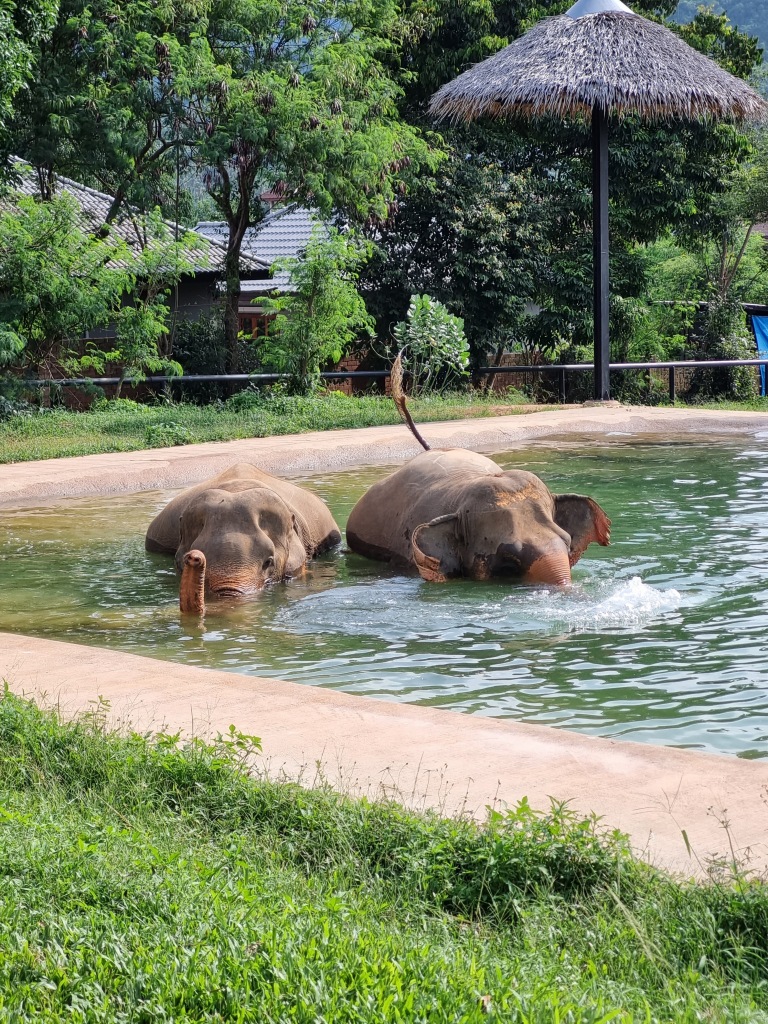
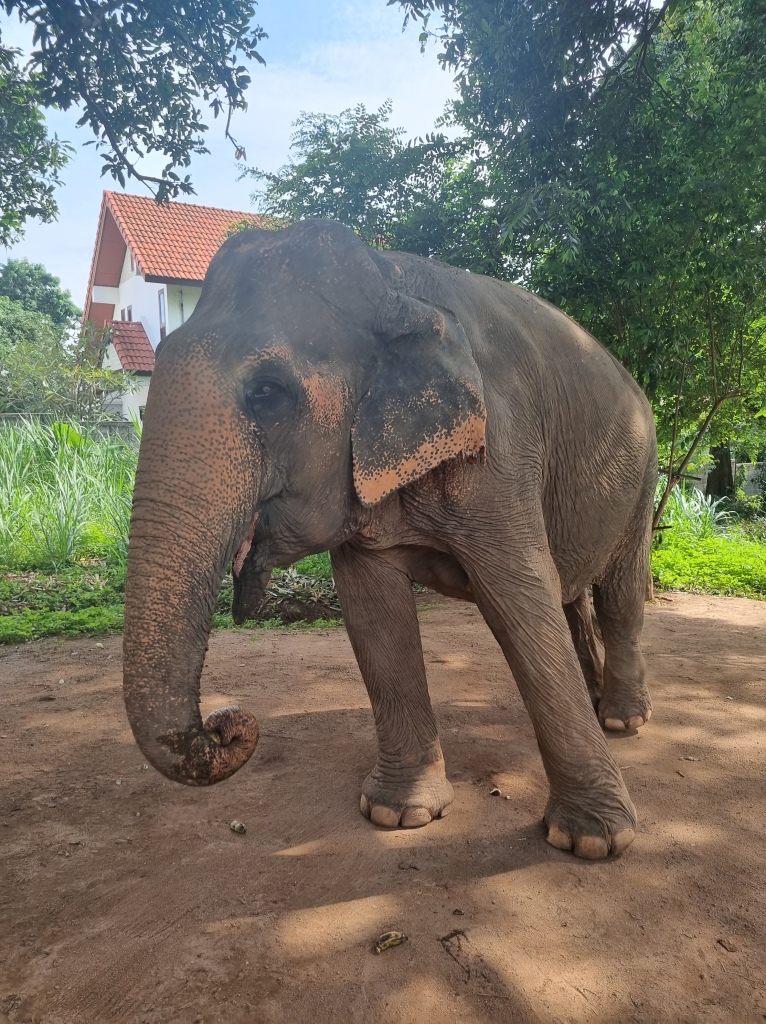
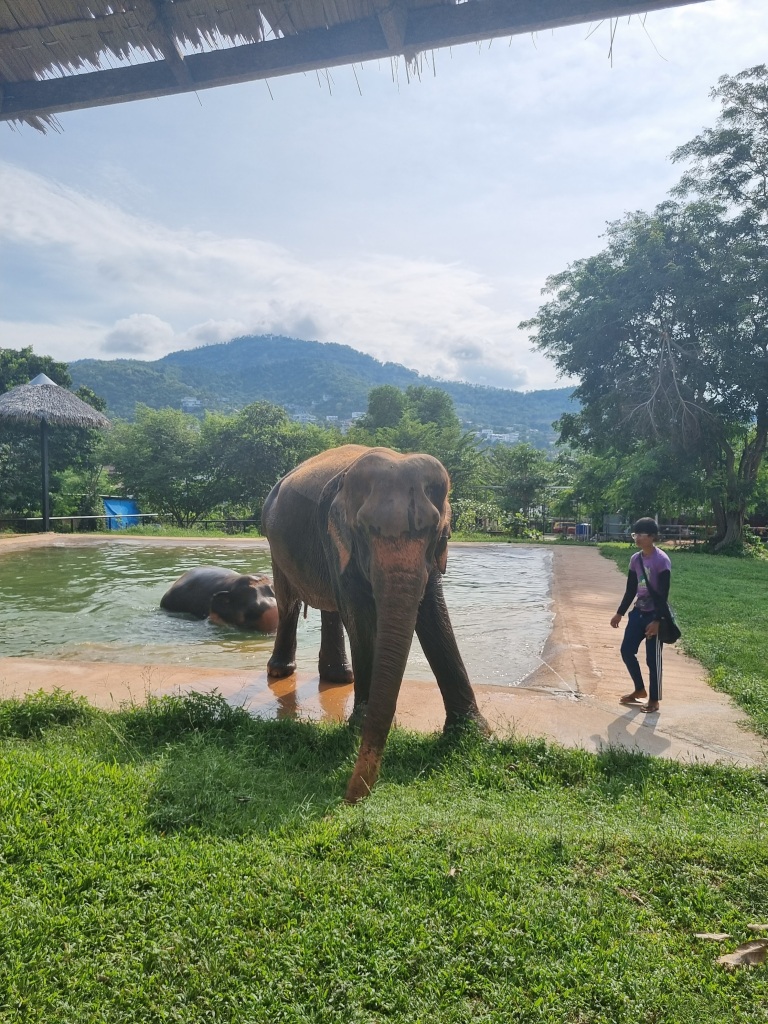
If you are interested in visiting an elephant sanctuary, it’s important to choose one that prioritises the well-being of the animals. Here are some things to check prior to visiting an elephant sanctuary:
- Look for a sanctuary that does not allow elephant riding, shows, or any other activities that are harmful to the animals. A good sanctuary should prioritise the physical and mental well-being of the elephants and provide them with a comfortable and natural habitat.
- The staff should have a deep understanding of elephant behaviour, biology, and care. They should be able to answer all your questions about the elephants, where they have been rescued from & why and the sanctuary’s practices.
- The sanctuary should be transparent about its practices and policies and willing to share information about its funding, staffing, and operations. It should also have mechanisms in place to hold staff accountable for any mistreatment of the elephants.
- Check online for positive reviews and ratings from previous visitors to the sanctuary to get a sense of their experiences. Look for reviews that highlight the sanctuary’s commitment to animal welfare and responsible tourism practices.
If you’re unsure of the centre and how they treat their animals, simply do not go, you can help put an end to these cruel practices by not giving your money to so-called ‘sanctuaries’.
‘Responsible Thailand’ has created a list of 13 truly ethical sanctuaries where you can go and observe these wonderful animals in their natural habitat.
WHAT TO EXPECT FROM AN ETHICAL ELEPHANT SANCTUARY
Ethical sanctuaries will offer an informative day where you can prepare different elephant foods, walk around the sanctuary grounds to meet and feed the elephants and watch them play together in a natural habitat, without the interruption of tourists. You will only be allowed to touch the elephants and pose with them during feeding, this is for the safety of the elephants and visitors.
You should not:
- Bathe the elephants
- Ride the elephants
- Participate or view any performances involving the elephants
Remember to respect the elephants’ space and boundaries, they are wild animals and can be unpredictable and dangerous if they feel threatened or stressed. Follow the instructions of the sanctuary staff and don’t attempt to touch or approach the elephants without their permission.
OUR VISIT TO SAMUI ELEPHANT SANCTUARY
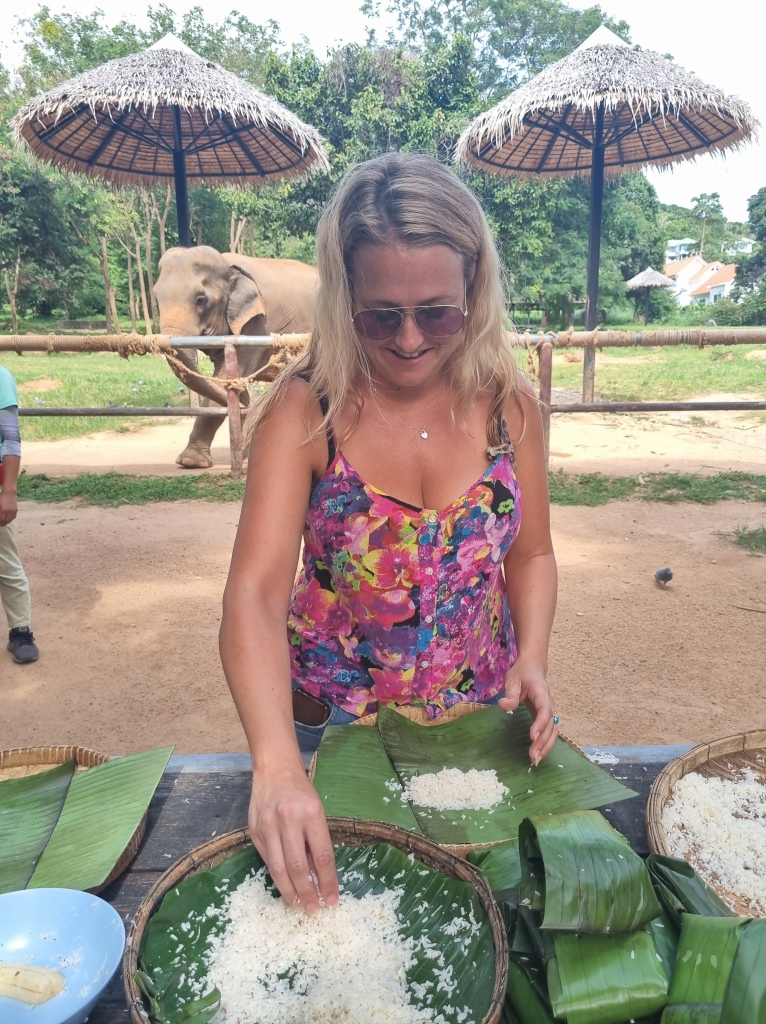
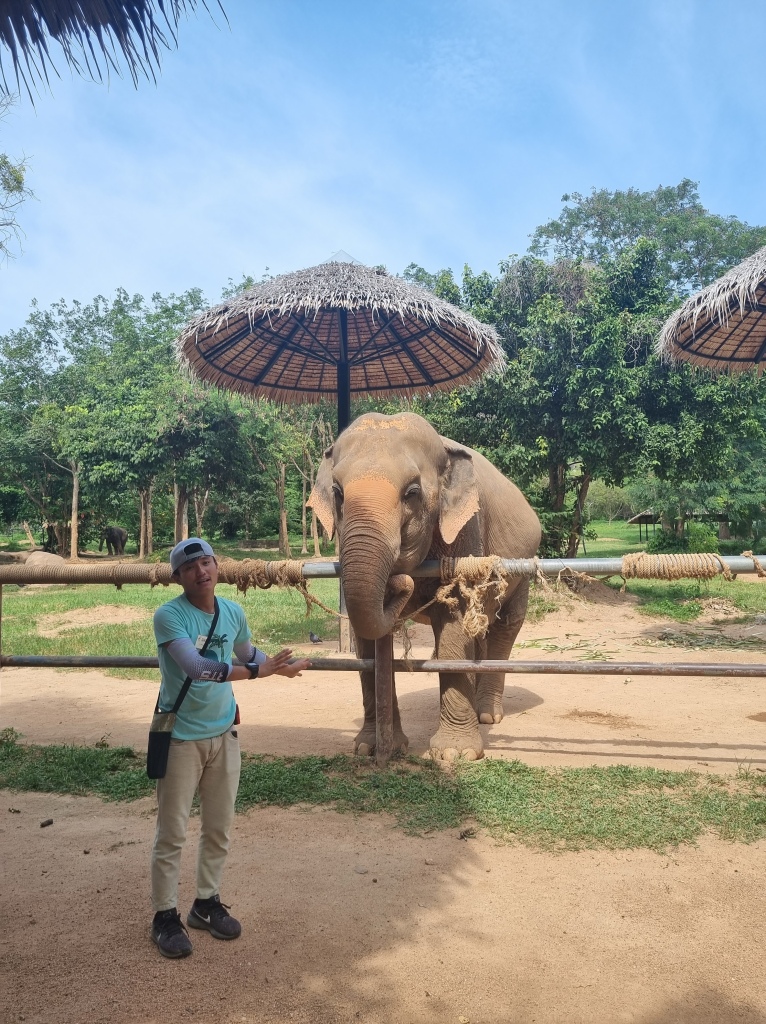
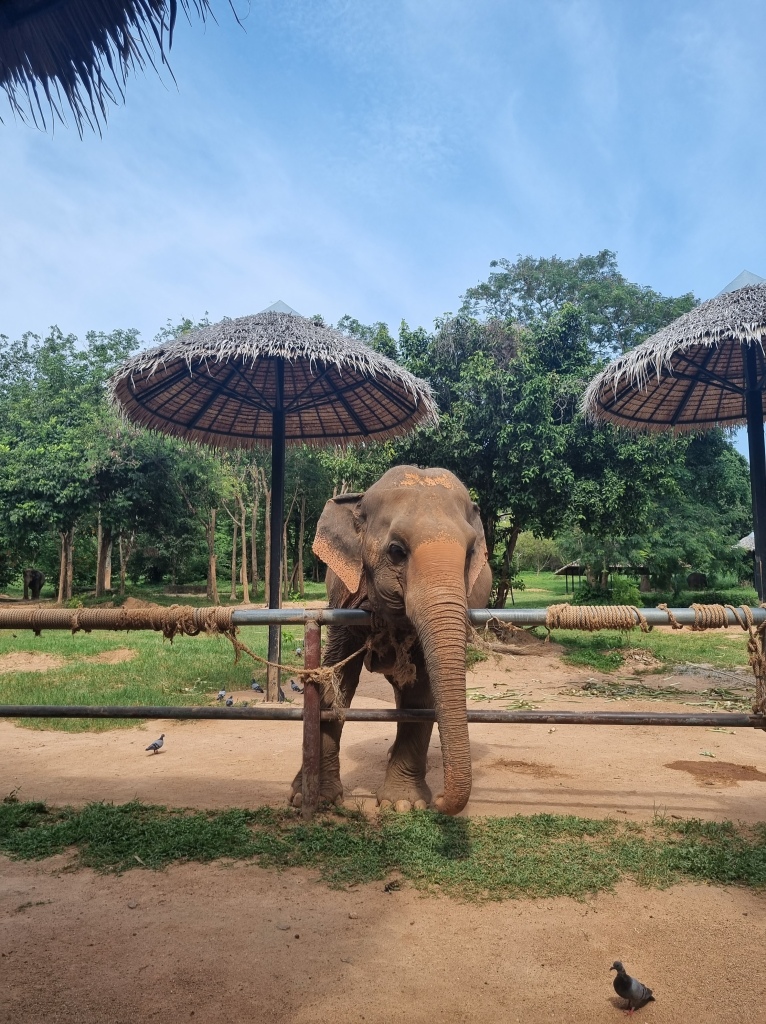
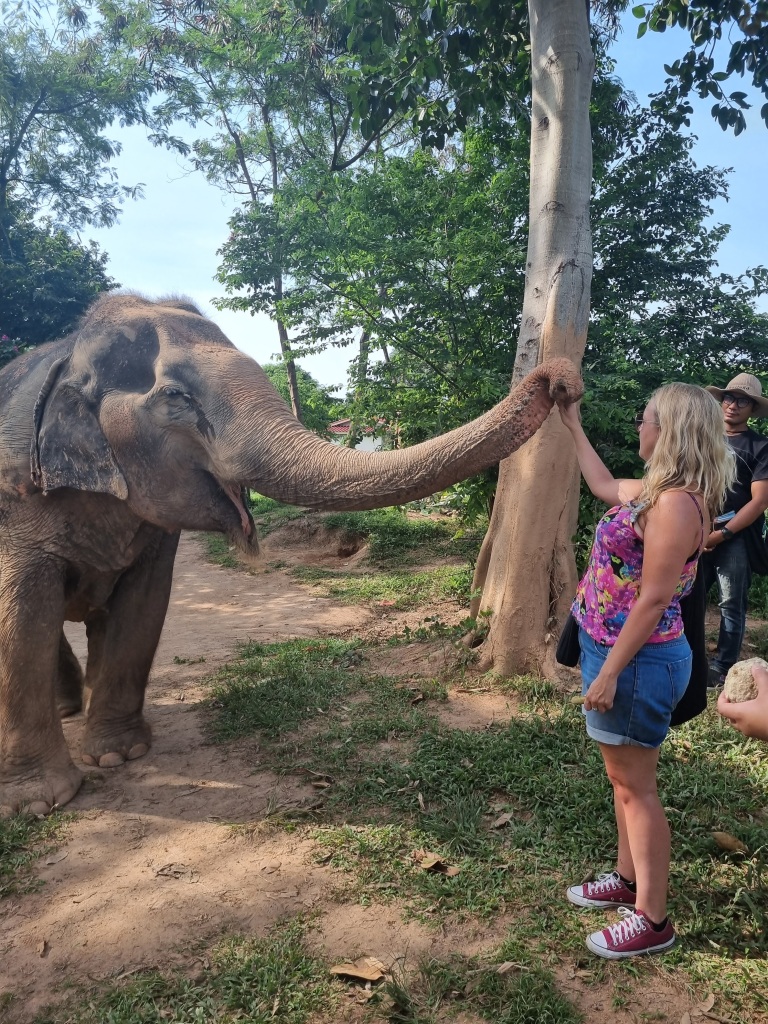
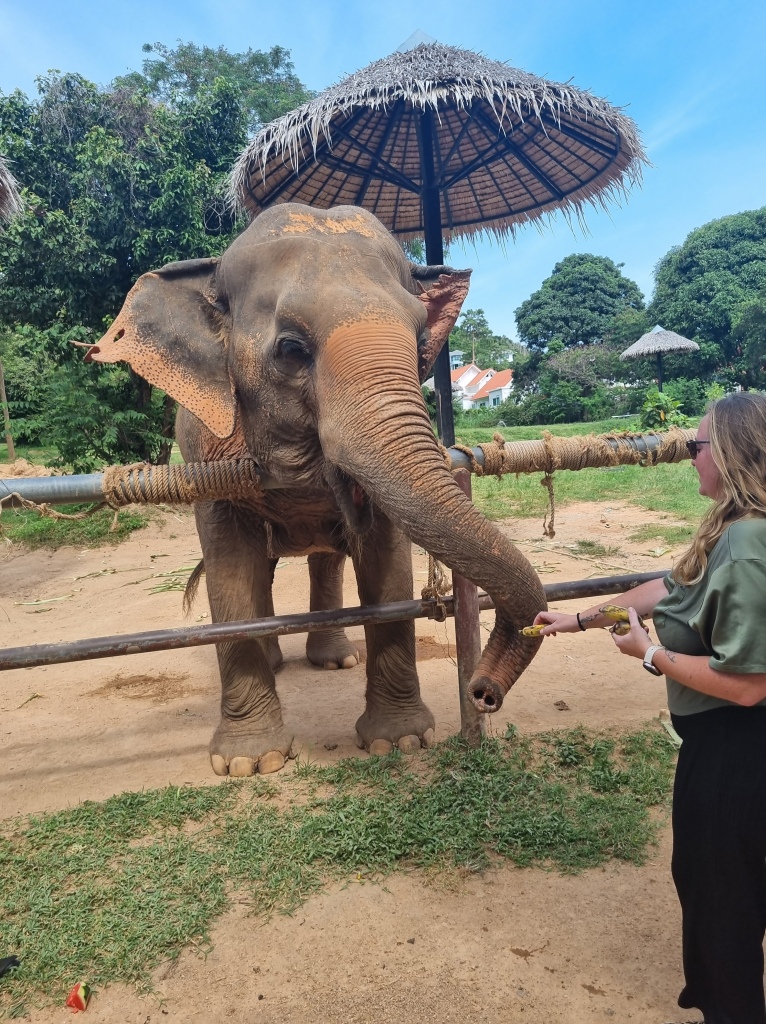
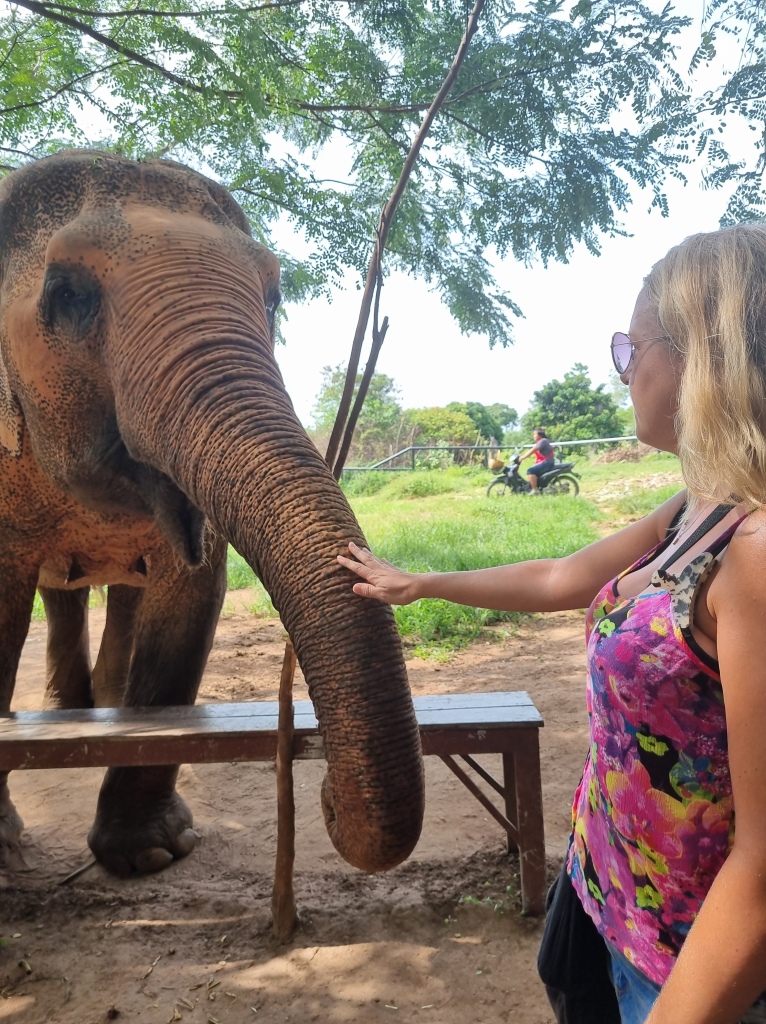
Whilst we were in Koh Samui, I visited Samui Elephant Sanctuary which was the first elephant sanctuary to open on the island and has won a number of awards including the Best Animal Welfare award for two consecutive years from the Tourism Authority of Thailand, UK and is recognised by leading animal welfare charity World Animal Protection as a Best Practice Elephant Venue.
The sanctuary offers two half-day tours each day and costs ฿3000 (£72) per adult, ฿1500 (£36) for each child aged between 5 – 11 years and entry is free for children 4 and under, payable in cash on arrival.
TOUR DETAILS (LOCATION: BOPHUT)
- Pick-up from your hotel/hostel/villa
- A welcome video and introduction
- Throughout your visit, you will be provided with water, soft drinks and snacks
- You’ll get stuck in and help to prepare food for the elephants including their favourite snack ‘elephant sushi’
- Meet some of these special elephants and feed them a selection of different fruits including watermelon and bananas – you’ll be surprised at how much they eat
- Walk through the grounds to meet some of the other elephants and observe them as they express their natural behaviours, such as foraging for food, bathing in the pool, and playing in the mud pit
- Before you leave, enjoy a buffet lunch of vegetarian Thai foods and some fresh fruit
- Finally, you’ll be driven back to your hotel
The elephants at this sanctuary have been rescued from all over Thailand. Most were previously used in elephant trekking and circuses and are now too old or sick to continue. Now, they are safe, have space to roam without chains, and are provided with lots of nutritious fruits and rice balls as well as veterinary care and medicines.
It’s a fun and informative day where you’re able to get up close to these gentle giants whilst supporting a wonderful charity.
lastly, HERE ARE 5 FACTS ABOUT THAI ELEPHANTS
- The Thai elephant is the national animal of Thailand and is celebrated as a symbol of power, wisdom, and good fortune.
- Thai elephants are the second-largest land animal in the world, with males weighing up to 12,000 pounds (5,500 kg) and standing up to 11.5 feet (3.5 meters) tall.
- Thai elephants have been used for transportation and heavy lifting for centuries, particularly in the logging industry. However, in 1989, the Thai government banned logging, leading many elephants to be unemployed.
- Elephants have a special role in Thai festivals and ceremonies, including the annual elephant round-up in Surin and the elephant procession during the Thai New Year celebration, Songkran.
- Thai elephants have a unique diet that includes up to 660 pounds (300 kg) of vegetation per day, such as bamboo, grass, and fruit. They also require around 200 litres (53 gallons) of water daily to survive.
Visiting an elephant sanctuary in Thailand is a once-in-a-lifetime experience that you won’t forget. It’s an opportunity to see these magnificent animals up close, learn about their lives, and contribute to their conservation. Just make sure to choose an ethical and responsible sanctuary that prioritises the elephants’ well-being, and always respects the space and boundaries of these wonderful elephants.
If you’re a fellow long-term traveller or travel lover we’d love to connect with you over on Instagram or check out some of our previous blogs below.
And if you want to know more about our travels and experiences why not subscribe and join us on our adventures.
Hope to see you there,


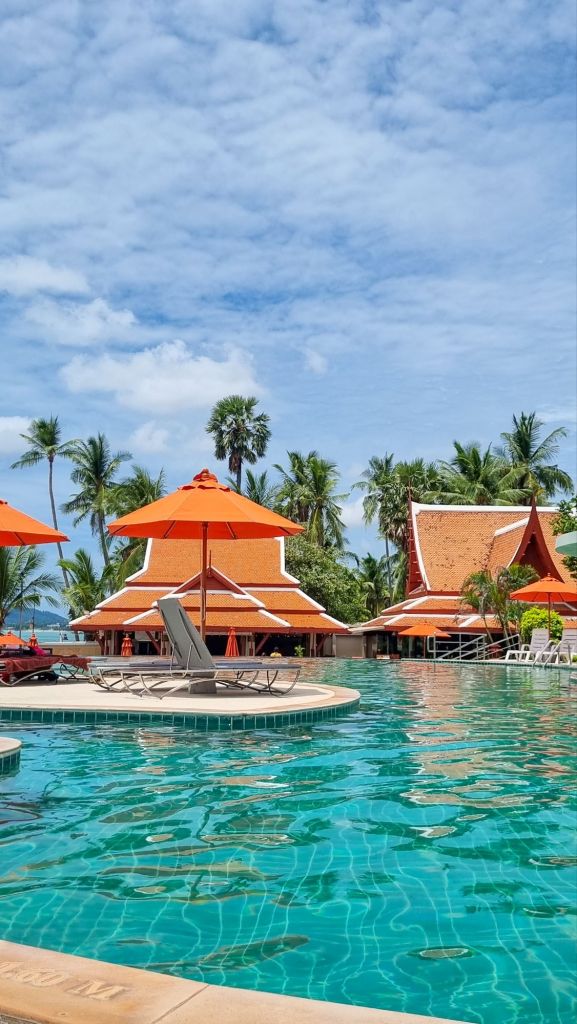
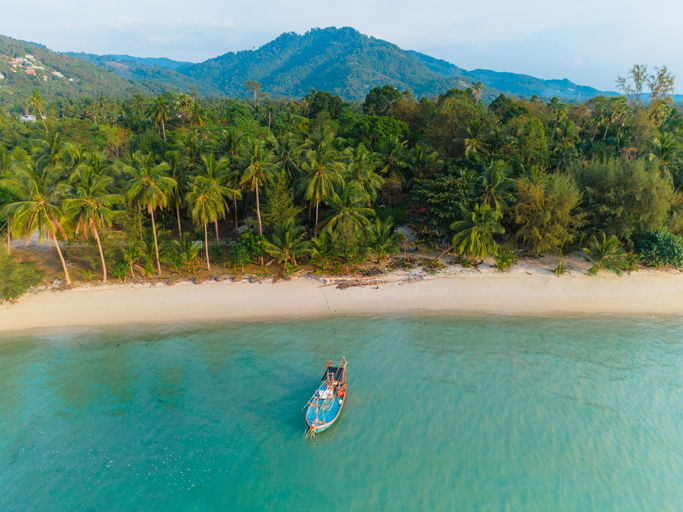
2 Comments Add yours